g-guys?
/mlpol/ - My Little Politics
Archived thread
Anonymous
No.250290
>>250283
>be hasbro
>get studio mandate to make art so ugly nobody makes porn of it
>be told to appeal to Zoomers
"Those kids love crudely drawn webshorts, right? They'll love it if my PROFESSIONALLY-MADE PRODUCT looks worse than those Storytime Animations, right?"
>gotta love soytoons
>be hasbro
>get studio mandate to make art so ugly nobody makes porn of it
>be told to appeal to Zoomers
"Those kids love crudely drawn webshorts, right? They'll love it if my PROFESSIONALLY-MADE PRODUCT looks worse than those Storytime Animations, right?"
>gotta love soytoons
>>250283
I personally love the new artstyle. Especially what they did to Applejack. While to some, portraying family life in pictorial rural america seems charming and innocent there are things to vary of. Most people don't understand this but isolation for your kids is a slippery slope, yes they are lesss likely to be inslaved to consumerisms of today but they will also be less likely to meet different peoples. This is how ignorance and "we and them" starts. Children has to meet other different children so they can truely understand that there are no differences between people. It is very easy to demonize other people when you haven't actually meet them.
This why a sigh of relief leaved my lips when I heard the good news of making Applejack a city pony. For you see, while cities has a lot of pollution and therefore is not a good place to raise kids, they do have better education and more peoples of different backgrounds in their vicinity. Living on a farm and breathing the fresh air with firends annd family sounds nice but that is also the scary part about it; one day your eating Applejack's apple pie, the next you are drowning your brain in moonshine.
We have been lucky during the run of the show that we never got writers that was unaware of this. It is clear that they handled Applejack's character the way one treats toxic wastes in a nuclear power plant, with keeping in mind that it is dangerous if not used with safety precautions. For example, in the episode "Gossipe Bridle" Applejack is the one who is the most bigotted when Zecora the zebra comes to town. This is while Twilight, the one who grow up in a major city and has a very high education, was the only one of main characters that did not have any prejudices against Zecora. And if I may say so, the writers showed that they were even more "Woke!" by illustrating how a normal functional and now even an exceptionally smart person/(Te he he) like Twilight can fall wictim to facism. It is all about making sure you don't have friends that are racists since even if they keep their morally questionable opionions under lock and key, you will go easier on them because they are your friends. Maybe, you will feel bad for them as they keep saying uneduated and unscientific things or you want to rationalize to yourself that your friend isn't evil and so he most have a point in his argument somewhere, this is bad think. Never let any form of hate into your mental space. It is like a disease, ones you agree to something racist, there will be no reason to stop there. Like a cancer it will grow until you are one of them. Just cut your ties with your Applejack before it is too late and don't be like Twilight who ended up leading a lynchmob to a "My Little Pony" representation of a African-American.
I personally love the new artstyle. Especially what they did to Applejack. While to some, portraying family life in pictorial rural america seems charming and innocent there are things to vary of. Most people don't understand this but isolation for your kids is a slippery slope, yes they are lesss likely to be inslaved to consumerisms of today but they will also be less likely to meet different peoples. This is how ignorance and "we and them" starts. Children has to meet other different children so they can truely understand that there are no differences between people. It is very easy to demonize other people when you haven't actually meet them.
This why a sigh of relief leaved my lips when I heard the good news of making Applejack a city pony. For you see, while cities has a lot of pollution and therefore is not a good place to raise kids, they do have better education and more peoples of different backgrounds in their vicinity. Living on a farm and breathing the fresh air with firends annd family sounds nice but that is also the scary part about it; one day your eating Applejack's apple pie, the next you are drowning your brain in moonshine.
We have been lucky during the run of the show that we never got writers that was unaware of this. It is clear that they handled Applejack's character the way one treats toxic wastes in a nuclear power plant, with keeping in mind that it is dangerous if not used with safety precautions. For example, in the episode "Gossipe Bridle" Applejack is the one who is the most bigotted when Zecora the zebra comes to town. This is while Twilight, the one who grow up in a major city and has a very high education, was the only one of main characters that did not have any prejudices against Zecora. And if I may say so, the writers showed that they were even more "Woke!" by illustrating how a normal functional and now even an exceptionally smart person/(Te he he) like Twilight can fall wictim to facism. It is all about making sure you don't have friends that are racists since even if they keep their morally questionable opionions under lock and key, you will go easier on them because they are your friends. Maybe, you will feel bad for them as they keep saying uneduated and unscientific things or you want to rationalize to yourself that your friend isn't evil and so he most have a point in his argument somewhere, this is bad think. Never let any form of hate into your mental space. It is like a disease, ones you agree to something racist, there will be no reason to stop there. Like a cancer it will grow until you are one of them. Just cut your ties with your Applejack before it is too late and don't be like Twilight who ended up leading a lynchmob to a "My Little Pony" representation of a African-American.
Is there a picture of the new art style that isn’t entirely obscured by text?
1573582321_1.jpg (52.7 KB, 640x640, 72490516_1322960967886682_8051564638901671004_n.jpg)
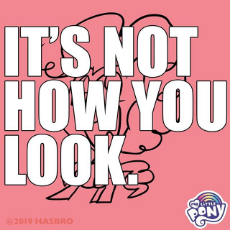
1573582321_2.jpg (73.1 KB, 750x750, 75210509_123673828721732_2743917537781764155_n.jpg)
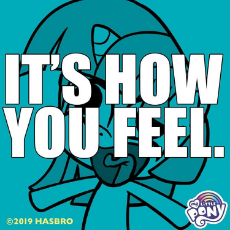
1573582321_3.jpg (80.6 KB, 750x750, 72843160_147092013299920_3715300931981150824_n.jpg)

Anonymous
No.250309
Anonymous
No.250310
Anonymous
No.250311
>>250308
Honestly, if g5 goes for ttgo style, I won't be as buttmad as I was when tt went ttgo.
Tt already had a more serious polished vibe that mlp has been steadily loosing. Ttgo shifted it's target audience so much more than I feel mlp would if they took that route.
If g5 is the art style that is in these teaser pics, I'm not so convinced it would be that bad. We will still be here, shitposting away and (hopefully) creating content.
One of the reasons I like mlp so much is the writing culture /mlp/ cultivates, and even when the new episodes are trash, it lends to more world building opportunities and character templates.
Honestly, if g5 goes for ttgo style, I won't be as buttmad as I was when tt went ttgo.
Tt already had a more serious polished vibe that mlp has been steadily loosing. Ttgo shifted it's target audience so much more than I feel mlp would if they took that route.
If g5 is the art style that is in these teaser pics, I'm not so convinced it would be that bad. We will still be here, shitposting away and (hopefully) creating content.
One of the reasons I like mlp so much is the writing culture /mlp/ cultivates, and even when the new episodes are trash, it lends to more world building opportunities and character templates.
>>250312
> discouraging a 'brony' fandom at all costs.
Why? Hasn't the show (And the toys) never been more popular?
> discouraging a 'brony' fandom at all costs.
Why? Hasn't the show (And the toys) never been more popular?
>>250314
I'm just going by the disparaging comments about the fandom. It makes sense though. Little girls don't tend to get pissed about character continuity and development, nor do they compare/contrast writers and authors.
And since the Hasjew toys tend to be piss-poor quality, alot of those sales are going away from them.
Its not just about having a good view-count and good merchandise sales, its about having an audience that can be predictably programmed through television commercialism. They want little girls who will squeal when a new playset is brought out, and will insist their parents buy it for them without critical assessments of quality and function. This was made glaringly apparent in the "friendship journal" episode, the critics being caricatures but still adequate representations not of the fandom specifically, but of the (in their eyes) undesirable elements of having critically thinking adults as the majority of content consumers.
I'd go further to suggest that they may not want the new animation to appeal to kids AND adults, as having parents watching alongside their kids might make it more difficult to insert 'progressive' ideas and symbols to an unwitting audience without backlash.
Alot of this is conjecture, but its based on existing business strategy and marketing, so it stands to reason that at least some if not most/all is accurate.
I'm just going by the disparaging comments about the fandom. It makes sense though. Little girls don't tend to get pissed about character continuity and development, nor do they compare/contrast writers and authors.
And since the Hasjew toys tend to be piss-poor quality, alot of those sales are going away from them.
Its not just about having a good view-count and good merchandise sales, its about having an audience that can be predictably programmed through television commercialism. They want little girls who will squeal when a new playset is brought out, and will insist their parents buy it for them without critical assessments of quality and function. This was made glaringly apparent in the "friendship journal" episode, the critics being caricatures but still adequate representations not of the fandom specifically, but of the (in their eyes) undesirable elements of having critically thinking adults as the majority of content consumers.
I'd go further to suggest that they may not want the new animation to appeal to kids AND adults, as having parents watching alongside their kids might make it more difficult to insert 'progressive' ideas and symbols to an unwitting audience without backlash.
Alot of this is conjecture, but its based on existing business strategy and marketing, so it stands to reason that at least some if not most/all is accurate.
>>250318
And, what happens when the parents unplug their cable,; go searching for age-old episodes of ''Care Bares'', ''She-Ra'', and ''MLP''; and buy the "Lego Friends" toyline (AFAIK, they haven't tried inserting progressivism in their toy lines)?
And, what happens when the parents unplug their cable,; go searching for age-old episodes of ''Care Bares'', ''She-Ra'', and ''MLP''; and buy the "Lego Friends" toyline (AFAIK, they haven't tried inserting progressivism in their toy lines)?
Anonymous
No.250322
>>250321
>And, what happens when the parents unplug their cable,; go searching for age-old episodes of ''Care Bares'', ''She-Ra'', and ''MLP''; and buy the "Lego Friends" toyline (AFAIK, they haven't tried inserting progressivism in their toy lines)?
There are plenty of revoltingly liberal ideas and ideology crammed into all those things, it's just a little less blatant. I doubt Hasjew will change their marketing strategy.
>And, what happens when the parents unplug their cable,; go searching for age-old episodes of ''Care Bares'', ''She-Ra'', and ''MLP''; and buy the "Lego Friends" toyline (AFAIK, they haven't tried inserting progressivism in their toy lines)?
There are plenty of revoltingly liberal ideas and ideology crammed into all those things, it's just a little less blatant. I doubt Hasjew will change their marketing strategy.
Anonymous
No.250325
>>250283
>More simplified art style that takes less work
>A way of hasbro humiliating G4 fans
We expected this didn't we?
>More simplified art style that takes less work
>A way of hasbro humiliating G4 fans
We expected this didn't we?
Anonymous
No.250326
>>250302
>"... If yourself draw like a clipper finger freak who just discovered MSpaint, don't fret: just write excessive amounts of texts and hide the hideous art behind huge letters..."
Ben "Yahtzee" Croshaw
I know the quote is not exactly that, but I just wanted to point the shittiest market strategy these guys are going to save face.
>"... If yourself draw like a clipper finger freak who just discovered MSpaint, don't fret: just write excessive amounts of texts and hide the hideous art behind huge letters..."
Ben "Yahtzee" Croshaw
I know the quote is not exactly that, but I just wanted to point the shittiest market strategy these guys are going to save face.
Anonymous
No.250331
I'll definitely still ending up nutting to porn of G5 even if it looks like this. But I won't enjoy it as much as I would've had it looked better. And not in November, of course.
>>250283
As it turns out, if quality is literally of no concern the g4 style is expensive to animate. It’s cheaper to hire calarts masters degree graduates through unpaid internships to animate the only style they know: shitty sideways-Lima-bean, than it is to hire an offshore Indian animation firm familiar with flash.
This isn’t the darkest timeline.
This was always the only possible timeline.
As it turns out, if quality is literally of no concern the g4 style is expensive to animate. It’s cheaper to hire calarts masters degree graduates through unpaid internships to animate the only style they know: shitty sideways-Lima-bean, than it is to hire an offshore Indian animation firm familiar with flash.
This isn’t the darkest timeline.
This was always the only possible timeline.
Anonymous
No.250340
1573610538.jpg (27.1 KB, 374x372, REEEEEEEEEEEEEEEEEEEEEEEEEEEEEEEEEEEEEEEEEEEEEEEEEEE.jpg)

Anonymous
No.250350
Anonymous
No.250351
>>250328
I 'member that...
Let's go take another look at...
>>250283
>>250302
AHHHH! My eyes they burn! They could have used more text to cover the horror better, but no!
They just used it to lure peoples' eyes in. I'll no longer be able to trust any text ever again!
My only hope is that those eye bleeding images are used on the 6 gorillion surviors of the 6 gorillion so they too will experience the occipital pain I have.
>>250320
The brain bleach where is the b-
I 'member that...
Let's go take another look at...
>>250283
>>250302
AHHHH! My eyes they burn! They could have used more text to cover the horror better, but no!
They just used it to lure peoples' eyes in. I'll no longer be able to trust any text ever again!
My only hope is that those eye bleeding images are used on the 6 gorillion surviors of the 6 gorillion so they too will experience the occipital pain I have.
>>250320
The brain bleach where is the b-
>>250336
>the g4 style is expensive to animate
It's literally just flash puppets though. Any idiot on newgrounds could do it for zero dollars.
>the g4 style is expensive to animate
It's literally just flash puppets though. Any idiot on newgrounds could do it for zero dollars.
>>250357
Calarts grads working for exposure are cheaper than $3 an hour Indian animation sweatshops. It’s simple economics.
Calarts grads working for exposure are cheaper than $3 an hour Indian animation sweatshops. It’s simple economics.
Anonymous
No.250382
>>250357
True. I farted out over 100 frames of animation for an entirely made-up pony in under a week of overall time spent drawing him and writing his code. Only reason he's not done now? I got bored and gave him a playable keytar he can whip out mid-fight.
True. I farted out over 100 frames of animation for an entirely made-up pony in under a week of overall time spent drawing him and writing his code. Only reason he's not done now? I got bored and gave him a playable keytar he can whip out mid-fight.
Anonymous
No.250383
>>250291
At first, I thought you were serious and almost took to the keyboard to write an angry reply.
Thank you for this laugh.
At first, I thought you were serious and almost took to the keyboard to write an angry reply.
Thank you for this laugh.
Anonymous
No.250409
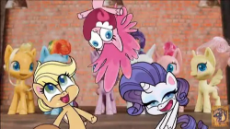
Anonymous
No.250416
1573667716.webm (535.1 KB, Resolution:480x480 Length:00:00:06, all of the sounds that are trapped in your mind.webm) [play once] [loop]
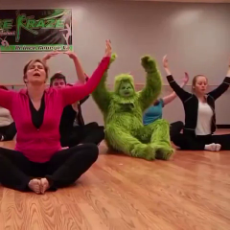
Anonymous
No.250422
THIS IS WORSE THAN GREEK AND ARMENIAN GENOCIDE COMBINED
Anonymous
No.250436
1573673490.png (156.1 KB, 611x404, 52fc7dce071d40464388b1d761d543d0f4c7001b.png)
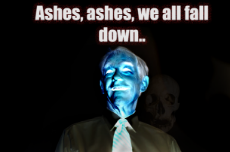
>>250435
But that implies we still have a chance to wish for ponies to die and bring an end to this shambling, undead nightmare.
But that implies we still have a chance to wish for ponies to die and bring an end to this shambling, undead nightmare.
>>250441
**I remember the story ending with the guy just wishing for his undead son to die again and that was that.**
**I remember the story ending with the guy just wishing for his undead son to die again and that was that.**
Anonymous
No.250449
Anonymous
No.250450
Anonymous
No.250466
>>250447
It's goos, but will die in December when the Holidays Special comes up on YT.
It already aired, but that will be the final upload of anything offically related to G4
It's goos, but will die in December when the Holidays Special comes up on YT.
It already aired, but that will be the final upload of anything offically related to G4
>>250445
This only raises more questions. What's with the content of all the leaks? What happened to nigger-Jack? Was that all a red herring? Also,
>Amazon debut on Nov. 13th
Hold on a sec,.... No new toy line appears on Amazon at this time, but the day is young.
This only raises more questions. What's with the content of all the leaks? What happened to nigger-Jack? Was that all a red herring? Also,
>Amazon debut on Nov. 13th
Hold on a sec,.... No new toy line appears on Amazon at this time, but the day is young.
Anonymous
No.250474
1573679133.png (580.8 KB, 581x596, 72480504_1292588644245278_613155260663332864_n.png)
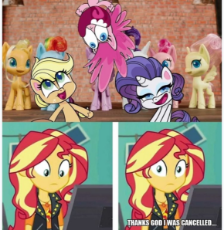
Anonymous
No.250482

Anonymous
No.250485
>>250484
I want to cum inside cal-arts dash
But really I'm not even suprised at this point since they want to tear anything good from this show because it makes them upset and doesn't tow the line of their indoctrination program
I want to cum inside cal-arts dash
But really I'm not even suprised at this point since they want to tear anything good from this show because it makes them upset and doesn't tow the line of their indoctrination program
Anonymous
No.250490
We should have foreseen the signs Rule 34 grasped fowards in time not knowing the the true implication, and brought it back to warn us!
Seven years ago...
Seven years ago...
Anonymous
No.250491
1573684955.png (120.0 KB, 500x322, An alien world built entirely of pain.png)
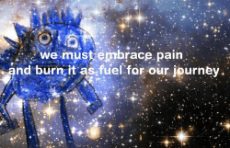
Anonymous
No.250496
1573686907.jpg (70.7 KB, 960x421, 74236003_3183134985037250_4899136853719908352_o.jpg)

Wtf would they think that Rarity would be caught dead with a mane like that?
Anonymous
No.250501
I would like to thank Hasbro for appealing to us autist who cannot read subtle emotions. This is much better. Now I know all of these characters are in pain and are begging for the sweet release of death. Glad we clear that up.
>>250500
I think my favorite part has to be that they've given every character the personality of Pinkie Pie, even Fluttershy and Rarity.
Except for Rainbow Dash, who they appear to have given the Dreamworks Face treatment instead.
I think my favorite part has to be that they've given every character the personality of Pinkie Pie, even Fluttershy and Rarity.
Except for Rainbow Dash, who they appear to have given the Dreamworks Face treatment instead.
Anonymous
No.250505
>>250503
Haha, yeah exactly. I was think about how Pinkie would be basically absolete this time around. That's is more than anything else what really bothers me with these looks. Just the emtional extravaganza, I don't know.
You just knoww that these characters will not be silent nor will they be acting in sensible way.
When they are angry, they are really angry and so on. Add to this they will probably also be caricatures of themselves. Twilight willl probably jump around the room by mere mention of books.
>>250507
Are you sure? >>250411
Because it doesn't seem like that to me.
Haha, yeah exactly. I was think about how Pinkie would be basically absolete this time around. That's is more than anything else what really bothers me with these looks. Just the emtional extravaganza, I don't know.
You just knoww that these characters will not be silent nor will they be acting in sensible way.
When they are angry, they are really angry and so on. Add to this they will probably also be caricatures of themselves. Twilight willl probably jump around the room by mere mention of books.
>>250507
Are you sure? >>250411
Because it doesn't seem like that to me.
>>250510
I'm pretty sure that some massive pinkiefag is responsible for this. Apparently Sugarcube Corner is the central location of the show now, and if you look at the promotional images in the EqD cap you'll notice that she's the only pony who gets to be in every pic. The reason why everyone is overly-expressive and has oversized manes is because somebody looked at the cast and said, "What if ALL of them were Pinkie Pie?"
I'm pretty sure that some massive pinkiefag is responsible for this. Apparently Sugarcube Corner is the central location of the show now, and if you look at the promotional images in the EqD cap you'll notice that she's the only pony who gets to be in every pic. The reason why everyone is overly-expressive and has oversized manes is because somebody looked at the cast and said, "What if ALL of them were Pinkie Pie?"
Anonymous
No.250512
Anonymous
No.250515
>>250513
Yeah, it sure is.
>>250511
>pinkiefag
That is a fun idea though I agree with the with the anon who talked about it being an industry thing. Probably something to do with selling a product.
Don't know exactly how this is a better way. Perhaps it is cheaper to make since you can reduce all the elements of the series down and still sell it. Like this series will probably not have that great of a plot nor a animation nor music for that matter.
Yeah, it sure is.
>>250511
>pinkiefag
That is a fun idea though I agree with the with the anon who talked about it being an industry thing. Probably something to do with selling a product.
Don't know exactly how this is a better way. Perhaps it is cheaper to make since you can reduce all the elements of the series down and still sell it. Like this series will probably not have that great of a plot nor a animation nor music for that matter.
Anonymous
No.250522
Anonymous
No.250524
1573694883.webm (38.5 MB, Resolution:1280x720 Length:00:02:50, Godspeed You! Calarts Pony.webm) [play once] [loop]

Anonymous
No.250529
Guys, can you please focus the nukes just on san francisco?
I know, "the world must burn and all" but you know who did it.
I know, "the world must burn and all" but you know who did it.
Anonymous
No.250543
1573705037_1.png (518.5 KB, 1280x720, vlcsnap-2019-11-14-04h48m10s784.png)

1573705037_2.png (525.4 KB, 1280x720, vlcsnap-2019-11-14-04h48m10s784 - horror.png)

Anonymous
No.250549
>>250406
What turns me off of this the most is that they animated them singing "good as Hell". I don't like my ponies having such vulgar language.
What turns me off of this the most is that they animated them singing "good as Hell". I don't like my ponies having such vulgar language.
>>250406
>zigger music
>zigger singer
>zigger ghetto life
>zigger style
I wonder (((who))) is behind that crap.
>zigger music
>zigger singer
>zigger ghetto life
>zigger style
I wonder (((who))) is behind that crap.
Anonymous
No.250555
>>250553
Where's the "I stopped watching a long time ago" option?
Where's the "I stopped watching a long time ago" option?
Anonymous
No.250559
>>250563
Anyone else wonder if Faust now regrets sharing her childhood imaginings with the world? Hasbro is just gonna trot these six out forever as cashgrabs.
Anyone else wonder if Faust now regrets sharing her childhood imaginings with the world? Hasbro is just gonna trot these six out forever as cashgrabs.
>>250564
I'm still salty she quit so early and left the shitty writers in charge which led to the abomination that was S3 and Princess Twilight.
I've wondered for a long while If the show almost got cancelled around that time, which would explain why S3 was only half as long as a normal season and abruptly ended with Twilight ascending to alicornhood out of nowhere.
I'm still salty she quit so early and left the shitty writers in charge which led to the abomination that was S3 and Princess Twilight.
I've wondered for a long while If the show almost got cancelled around that time, which would explain why S3 was only half as long as a normal season and abruptly ended with Twilight ascending to alicornhood out of nowhere.
>>250566
Did she quit? I've always been fuzzy on the details, but the impression I always got was that she had creative differences with what Hasbro wanted and they basically fired her.
Did she quit? I've always been fuzzy on the details, but the impression I always got was that she had creative differences with what Hasbro wanted and they basically fired her.
Anonymous
No.250569
>>250567
The story I remember was that her work life balance was taking a toll on her (I think she lived away from the studio and did a lot of traveling/working remotely?), so she stepped away to pursue other projects.
However, I would not be surprised at all if Hasbro was pulling some bullshit that drove her away. Obviously we've seen plenty of lore rape in this show over the years to sell toys. For example, replacing the tree with a crystal castle, giving the mane six rainbow power forms, the skittle Changelings (my personal most hated change aside from alicorn Twilight)...
The story I remember was that her work life balance was taking a toll on her (I think she lived away from the studio and did a lot of traveling/working remotely?), so she stepped away to pursue other projects.
However, I would not be surprised at all if Hasbro was pulling some bullshit that drove her away. Obviously we've seen plenty of lore rape in this show over the years to sell toys. For example, replacing the tree with a crystal castle, giving the mane six rainbow power forms, the skittle Changelings (my personal most hated change aside from alicorn Twilight)...
Anonymous
No.250572
>>250557
I voted "only because it crashed and burned, the ride doesn't stops", but only because I have been in this fandom long enough that it doesn't matter how bad it gets, ((((((((((((they)))))))))))) will find a way to tie you on the front of the locomotor, lit you up on fire, and crash you right into the ground.
The worst part? They keep tunneling down.
I voted "only because it crashed and burned, the ride doesn't stops", but only because I have been in this fandom long enough that it doesn't matter how bad it gets, ((((((((((((they)))))))))))) will find a way to tie you on the front of the locomotor, lit you up on fire, and crash you right into the ground.
The worst part? They keep tunneling down.
Ah, one of the best things about getting old is watching the entropic decay of every thing good in this world.
Anonymous
No.250586
Anonymous
No.250588
>>250511
>Apparently Sugarcube Corner is the central location of the show now, and if you look at the promotional images in the EqD cap you'll notice that she's the only pony who gets to be in every pic.
Prediction: Pinkie Pie is now the main character, and the entire show is shot in a style that she herself would see the world in. Pinkie's sugar-addled brain can only perceive the world through a Cal-Arts style.
>Apparently Sugarcube Corner is the central location of the show now, and if you look at the promotional images in the EqD cap you'll notice that she's the only pony who gets to be in every pic.
Prediction: Pinkie Pie is now the main character, and the entire show is shot in a style that she herself would see the world in. Pinkie's sugar-addled brain can only perceive the world through a Cal-Arts style.
Anonymous
No.250595
1573755255.mp4 (2.5 MB, Resolution:608x1080 Length:00:00:13, Chris Chan Screaming over mass twitter bans January 2019 CWC Lolcow Demon Version.mp4) [play once] [loop]

>>250573
>entropic decay
True.
Also this is the first time I have had to opportunity to use this, <clears throat>:
"OK Boomer"
But actually it's worse than that. If we assume a 100 year cycle in ideologies, it is then guaranteed that 50 years after you are born the world will be the exact opposite of what you grew up with. You are guaranteed to be disappointed with the world when you are old and have no choice but to end your days pessimistic and nostalgic. No wonder oldies are grumpy, add in failing health also.
>entropic decay
True.
Also this is the first time I have had to opportunity to use this, <clears throat>:
"OK Boomer"
But actually it's worse than that. If we assume a 100 year cycle in ideologies, it is then guaranteed that 50 years after you are born the world will be the exact opposite of what you grew up with. You are guaranteed to be disappointed with the world when you are old and have no choice but to end your days pessimistic and nostalgic. No wonder oldies are grumpy, add in failing health also.
>>250605
Interesting insight, I'd never quite considered how the cycle of cultural norms helps guarantee that older people are cursed to enter a world that disagrees with them (at least if they held mainstream views when they were young).
I really hope that I live to see the future where the SJW generation have become old, crusty, jaded individuals who all the young faschy kids make fun of; the ultimate inversion of the "racist grandpa" trope.
I want to watch an endless stream of Reichtube videos where kids publicly shame their soychugging grandparents for views.
Interesting insight, I'd never quite considered how the cycle of cultural norms helps guarantee that older people are cursed to enter a world that disagrees with them (at least if they held mainstream views when they were young).
I really hope that I live to see the future where the SJW generation have become old, crusty, jaded individuals who all the young faschy kids make fun of; the ultimate inversion of the "racist grandpa" trope.
I want to watch an endless stream of Reichtube videos where kids publicly shame their soychugging grandparents for views.
but the future
refused to change
refused to change
Anonymous
No.250639
I suppose it’s an accomplishment in a way, to go so long without necking myself after g4 was put out of its misery that I get to see it’s characters resurrected in shallow facsimiles of their former selves, their personalities mutilated to satisfy Elite interests.
If this sells toys well (and it will) our favorite characters will be paraded into living rooms to preach miscegenation and market toy lines for the rest of eternity. I suppose one silver lining of an outcome of this whole affront to God is that there will be no plot or consistent universe, only 2-5 minute hyperenergetic skits, which at least means Hasbro won’t be destroying deep lore when they change something to obsolete old toys and sell new ones with a different hair style.
I’d also like to make a prediction: the “potions” will be raceswapping or otherwise model changing potions most of the time, which will allow for a large combination of toys: unicorn/earth/pegasus for each main character and any new supporting cast, as well as possibly yak, changeling, skittling, dragon, bigger dragon, alicorn, etc. models. A potion will be used that makes then grow super long hair, another complete toy line. A potion will be used that changes their mane colour, another complete toy line. Order a million celestia dolls from China and the commies sent you pink models? Make a short 2 minute episode about a potion that makes you pink and offload the whole batch. Toy sales dropping? Bring out the big guns: transparent potions, or glitter potions, or crystal potions, or some other potion that makes the toy instantly noticeable as the new best toy. I’d also bet that they make a point to stop using a potion when the toy line sales start dropping, at which point the child can’t recreate play scenes on TV with their current set so they **neeeed** the glitter-potion twilight sparkle set. The third sugarcube corner set will come out and be essentially the same but with an extra room or “important” props like a cake mixer that mixes magic cakes, and since the old sugarcube corner is old and nasty and run down they took it down with a rainboom and built a new one where the old one was and then had an entire seven minute video on the new cake mixer and how fun it is.
I figure it might be better to drop the show now, blacklist the new gen, and pretend an Israeli company did a hostile takeover of the MLP franchise and then shut down the show and Hasbro.
If this sells toys well (and it will) our favorite characters will be paraded into living rooms to preach miscegenation and market toy lines for the rest of eternity. I suppose one silver lining of an outcome of this whole affront to God is that there will be no plot or consistent universe, only 2-5 minute hyperenergetic skits, which at least means Hasbro won’t be destroying deep lore when they change something to obsolete old toys and sell new ones with a different hair style.
I’d also like to make a prediction: the “potions” will be raceswapping or otherwise model changing potions most of the time, which will allow for a large combination of toys: unicorn/earth/pegasus for each main character and any new supporting cast, as well as possibly yak, changeling, skittling, dragon, bigger dragon, alicorn, etc. models. A potion will be used that makes then grow super long hair, another complete toy line. A potion will be used that changes their mane colour, another complete toy line. Order a million celestia dolls from China and the commies sent you pink models? Make a short 2 minute episode about a potion that makes you pink and offload the whole batch. Toy sales dropping? Bring out the big guns: transparent potions, or glitter potions, or crystal potions, or some other potion that makes the toy instantly noticeable as the new best toy. I’d also bet that they make a point to stop using a potion when the toy line sales start dropping, at which point the child can’t recreate play scenes on TV with their current set so they **neeeed** the glitter-potion twilight sparkle set. The third sugarcube corner set will come out and be essentially the same but with an extra room or “important” props like a cake mixer that mixes magic cakes, and since the old sugarcube corner is old and nasty and run down they took it down with a rainboom and built a new one where the old one was and then had an entire seven minute video on the new cake mixer and how fun it is.
I figure it might be better to drop the show now, blacklist the new gen, and pretend an Israeli company did a hostile takeover of the MLP franchise and then shut down the show and Hasbro.
1573778670.png (284.6 KB, 1280x521, 8a4a7bcef474069bf87f747c38a5975e03bfeb31.png)

Anonymous
No.250654
Anonymous
No.250655
1573782957.png (129.3 KB, 871x917, a740c8060e3564c892b4755f0871816.png)

>>250594
So basically this but canon? That would be the only think making the show redeemable.
Why is the Cal-Arts (I know it's not strictly speaking "Cal-Arts") style everywhere? It's like the postmodernism of animation. Everything has to be dumbed down for toddlers and the storyboard artists, sacrificing relatability and depth for a style that makes YTP look like high art. The Cal Arts style can be done right but not when it's overused and certainly not when it's trying to copy TTG.
Also, haven't they learned from Gen 3.5, or about how the market is saturated with this saccharine and differentiation is important? It'd be neat to look at the internal structure of Hasbro/DHX/whoever came up with this and see if the person who brought in Lauren Faust was replaced with a 30-something catlady.
So basically this but canon? That would be the only think making the show redeemable.
Why is the Cal-Arts (I know it's not strictly speaking "Cal-Arts") style everywhere? It's like the postmodernism of animation. Everything has to be dumbed down for toddlers and the storyboard artists, sacrificing relatability and depth for a style that makes YTP look like high art. The Cal Arts style can be done right but not when it's overused and certainly not when it's trying to copy TTG.
Also, haven't they learned from Gen 3.5, or about how the market is saturated with this saccharine and differentiation is important? It'd be neat to look at the internal structure of Hasbro/DHX/whoever came up with this and see if the person who brought in Lauren Faust was replaced with a 30-something catlady.
>>250751
My guess is because its either Cheaper or PC.
Considering I can't see the PC part of it, I'm presuming its easier to get it animated overseas by slave labor, like Steven universe does.
My guess is because its either Cheaper or PC.
Considering I can't see the PC part of it, I'm presuming its easier to get it animated overseas by slave labor, like Steven universe does.
>>250751
>>250753
It's just part of a general lowering of standards that's taking place all across the board. There's no benefit in trying to be exceptional anymore, so most people just learn the bare minimum they need to get a job in whatever their chosen field is. This extends to artists as much as to anyone else. Why go to all the trouble of learning classical painting styles when you're just going to end up working in some animation studio filling in the spaces of someone's doodle with a paint bucket tool? Better to just scribble something and get a degree.
>>250753
It's just part of a general lowering of standards that's taking place all across the board. There's no benefit in trying to be exceptional anymore, so most people just learn the bare minimum they need to get a job in whatever their chosen field is. This extends to artists as much as to anyone else. Why go to all the trouble of learning classical painting styles when you're just going to end up working in some animation studio filling in the spaces of someone's doodle with a paint bucket tool? Better to just scribble something and get a degree.
>>250808
There are legitimate criticisms to be made against Hazbin, but I really don't see what you could mean when you say it's calarts. The style of Hazbin doesn't look remotely similar to lima bean shows.
Please explain.
There are legitimate criticisms to be made against Hazbin, but I really don't see what you could mean when you say it's calarts. The style of Hazbin doesn't look remotely similar to lima bean shows.
Please explain.
>>250814
The porn look alot better than the actual show. Although I can't quite put my focus on it why...
>>250415
Ah right features remaining in the right place is mostly a guideline.
Contrasted is that the porn has actual depth, and perspective.
It has pony like proportions...
For imitating the original art style it's a 5/10
For improving it is a solid 8/9
For Epstein killing himself a 9/11. Could have done a better job.
The porn look alot better than the actual show. Although I can't quite put my focus on it why...
>>250415
Ah right features remaining in the right place is mostly a guideline.
Contrasted is that the porn has actual depth, and perspective.
It has pony like proportions...
For imitating the original art style it's a 5/10
For improving it is a solid 8/9
For Epstein killing himself a 9/11. Could have done a better job.
>>250791
>Choose not to be exceptional
>Not caring for professionalism
>No pride
Why live?
That's the truth, no one cares anymore to be more than barely able to qualify for their job. Many who qualifies don't care to teach the new addition on the job; complaining about the new guys is still a favorite activity tho, it's distasteful. Each to their own and fuck the rest is our motto these days, improvement can hang from a branch and get picked by crows by most people's reasoning.
>Choose not to be exceptional
>Not caring for professionalism
>No pride
Why live?
That's the truth, no one cares anymore to be more than barely able to qualify for their job. Many who qualifies don't care to teach the new addition on the job; complaining about the new guys is still a favorite activity tho, it's distasteful. Each to their own and fuck the rest is our motto these days, improvement can hang from a branch and get picked by crows by most people's reasoning.
Anonymous
No.250829
>>250819
>Although I can't quite put my focus on it why…
It's got something that Hasbro's vomit doesn't. Effort.
>Although I can't quite put my focus on it why…
It's got something that Hasbro's vomit doesn't. Effort.
Anonymous
No.250878
>>250819
>Although I can't quite put my focus on it why
I can tell you what comes to mind for me:
1. Hooves with visible depth/texture
2. Subtle wrinkles at the joints, hinting at squeezable, living flesh
3. Ahegao
>Although I can't quite put my focus on it why
I can tell you what comes to mind for me:
1. Hooves with visible depth/texture
2. Subtle wrinkles at the joints, hinting at squeezable, living flesh
3. Ahegao
Maybe it's all-in-all a good thing. If G5 had a moderately good art-style but had cancerous morals we would wind up with an insufferable SU-like fandom. However, if it's absolutely terrible then everyone will drop this flaming garbage pile and will have to look at where this bastardization started, giving us an edge over newfags. We weren't going to get a good G5 anyway.
>>250445
>mysterious source of potions that Pinkie keeps hidden behind the bakery counter and breaks out when the need arises.
Gotta admit it's hilarious when a deus ex machina becomes a selling point.
>>250445
>mysterious source of potions that Pinkie keeps hidden behind the bakery counter and breaks out when the need arises.
Gotta admit it's hilarious when a deus ex machina becomes a selling point.
Anonymous
No.250904
>>250892
I think he's saying that the cancerous morals would attract the kind of people who flock to SU, regardless of what the art looks like. SJWs can't really tell good art from bad anyway, they just automatically love anything that bleats woke propaganda.
I think he's saying that the cancerous morals would attract the kind of people who flock to SU, regardless of what the art looks like. SJWs can't really tell good art from bad anyway, they just automatically love anything that bleats woke propaganda.
Anonymous
No.250910
>>250552
remember that hasbro bought that nigger record label, and that the song used in the trailer is not the original, it had to be re-recorded to turn "fine ass" into "fine self"
remember that hasbro bought that nigger record label, and that the song used in the trailer is not the original, it had to be re-recorded to turn "fine ass" into "fine self"
Behold, the future
Anonymous
No.250924
>>250552
>zigger music
The "bronies" and the porn "problem" (for Hasbro) has come from the mostly whites (pic), maybe diversifying the brand made sense to someone. Larger market less porn "problem"
>zigger music
The "bronies" and the porn "problem" (for Hasbro) has come from the mostly whites (pic), maybe diversifying the brand made sense to someone. Larger market less porn "problem"
>>250808
>>250809
On the note of Hazbin, there are two things that I like about it. Some lefty faggots actaully goot offended by this. Jesus.
The second things is this. If she and her group could do something like that, then so can we.
I kinda liked hazbin on that note for being made by people who are probablu libtards it was quite cute. It is very clear that it is made a by a girl. Redemption, everyone has something good in them and and we should change the bad boys and such. Mmmm, it is so cute.
>>250809
On the note of Hazbin, there are two things that I like about it. Some lefty faggots actaully goot offended by this. Jesus.
The second things is this. If she and her group could do something like that, then so can we.
I kinda liked hazbin on that note for being made by people who are probablu libtards it was quite cute. It is very clear that it is made a by a girl. Redemption, everyone has something good in them and and we should change the bad boys and such. Mmmm, it is so cute.
>>250926
>If she and her group could do something like that, then so can we.
It took them two years to make the pilot and they have no idea when they're even going to begin on episode 2. Remember Do or Deer? This sort of thing is hard when you're just a ragtag bunch of unpaid amateurs.
>If she and her group could do something like that, then so can we.
It took them two years to make the pilot and they have no idea when they're even going to begin on episode 2. Remember Do or Deer? This sort of thing is hard when you're just a ragtag bunch of unpaid amateurs.
>>250928
Sure, but one episode on thirty min is better than nothing. Besides we don't know how much of their time was consumed by this and so on...
But I see your point. What I want to say is that there is more that we can do or we should probably not limited ourself too hard. Animation isn't out of our reach I guess is my point. With more generic background and with more simpler everything, fan-animation can be done.
Sure, but one episode on thirty min is better than nothing. Besides we don't know how much of their time was consumed by this and so on...
But I see your point. What I want to say is that there is more that we can do or we should probably not limited ourself too hard. Animation isn't out of our reach I guess is my point. With more generic background and with more simpler everything, fan-animation can be done.
>>250930
It's not just animation though, there's also the issue of coordination, team management, marketing, etc. There are a lot of people behind the scenes who make things happen, just as in an army there are echelons dedicated to making sure soldiers are able to do what they need to do which Siegefags often forget.
Fan-animation is of course much simpler but it's still not just something you can put out without significant expense.
It's not just animation though, there's also the issue of coordination, team management, marketing, etc. There are a lot of people behind the scenes who make things happen, just as in an army there are echelons dedicated to making sure soldiers are able to do what they need to do which Siegefags often forget.
Fan-animation is of course much simpler but it's still not just something you can put out without significant expense.
Anonymous
No.250952
>>250926
>>250931
>>250930
>>250928
The quick and dirty of making anything happen.
Ready, Fire, Aim.
Marketing is the number one priority. And making a great product.
The market is filled with skilled animators, voice actors, musicians, and everyone else that could be needed. That's not the focus of this at the moment.
Only move on to the next step when it'd good and Ready.
Ready: Preparation, gathering information, analyzing the market space and the competitors, have the great idea the market will prove if it truly is one. A prototype of said idea. Ect.
Don't get caught solely in the Ready phase.
If there is a great idea what exactly about the idea makes it great? Make sure to record everything!
Fire: Execution of the idea from beginning to end. Market the hell out of that idea, become masters of selling exactly this one thing.
In this case the Animation is the (something) of this (category).
Aim: Gatherer information did the Idea hit? How can it be improved again? Where were the faults? What is the market reaction to this Idea? Recalibrate and repeat from Ready.
Making such a hit with limited budget (ie none), doing the Idea (freeware, and really cheap software helps), time (and in this case manpower as well), and random shit that happens. Can make this a wee bit difficult.
What can corners can be cut, and have the great idea be intact? Is it going for extremely low production time? Is it ease of animation? Is it low budget voice acting?
Doing it is not only possible it's within reach, and we have the technology to do so easier than anyone before.
There is alot of wisdom in the past that can be used to lubricate the process.
To cut costs the public domain is our friend. Automation is our friend.
We can pull voice samples from the public domain run it through a neural network to synthesize voices from text. (Doing a podcast style 'animated' show would be third of the way done.)
Having a brand (of easily recognizable characters) reading works in the public domain is not only good publicity (such as libivox) it also increases the spread of our audience size. (Having something 'read' the text is practically already done.)
The script for each episode has to be done by people. The AI that does such a thing hasn't made it for humans yet other than a blob a chaos. (That too is changing)
Depending on what kind of animation, and how the corners are to be cut there is wiggle room. (There is AI able to simulate 3D movement of bipeds and quadrupeds. Leveraging such a system to create 2D animation is a big task on its ownz but in the end having such a thing makes animation much easier.)
Finding the stuff, and making good use of any electronic systems to our advantage.
>It's not just animation though, there's also the issue of coordination, team management, marketing, etc. There are a lot of people behind the scenes who make things happen, just as in an army there are echelons dedicated to making sure soldiers are able to do what they need to do (Spoiler).
It always is the problem. There are only so many ways to reduce work load over the short term, amd long term. The question is of the scale on what the project should be about.
A single person has the potential to do untold amounts of things. Though if there isn't others to catch them, or continue in their steed if (or when) they fall the long term may be lost.
Some of the management can be skipped at this early stage. Not all of them, any many people wouuld have to compress duties. Depending on how many people work on this thing, and how exactly everything will be sorted out.
Some steps, and things can be individualized to go through rapid deployment. Memes come to mind for marketing (aka propaganda).
Right now everything is in the Ready stage until it's finished Firing would be ill advised.
>>250931
>>250930
>>250928
The quick and dirty of making anything happen.
Ready, Fire, Aim.
Marketing is the number one priority. And making a great product.
The market is filled with skilled animators, voice actors, musicians, and everyone else that could be needed. That's not the focus of this at the moment.
Only move on to the next step when it'd good and Ready.
Ready: Preparation, gathering information, analyzing the market space and the competitors, have the great idea the market will prove if it truly is one. A prototype of said idea. Ect.
Don't get caught solely in the Ready phase.
If there is a great idea what exactly about the idea makes it great? Make sure to record everything!
Fire: Execution of the idea from beginning to end. Market the hell out of that idea, become masters of selling exactly this one thing.
In this case the Animation is the (something) of this (category).
Aim: Gatherer information did the Idea hit? How can it be improved again? Where were the faults? What is the market reaction to this Idea? Recalibrate and repeat from Ready.
Making such a hit with limited budget (ie none), doing the Idea (freeware, and really cheap software helps), time (and in this case manpower as well), and random shit that happens. Can make this a wee bit difficult.
What can corners can be cut, and have the great idea be intact? Is it going for extremely low production time? Is it ease of animation? Is it low budget voice acting?
Doing it is not only possible it's within reach, and we have the technology to do so easier than anyone before.
There is alot of wisdom in the past that can be used to lubricate the process.
To cut costs the public domain is our friend. Automation is our friend.
We can pull voice samples from the public domain run it through a neural network to synthesize voices from text. (Doing a podcast style 'animated' show would be third of the way done.)
Having a brand (of easily recognizable characters) reading works in the public domain is not only good publicity (such as libivox) it also increases the spread of our audience size. (Having something 'read' the text is practically already done.)
The script for each episode has to be done by people. The AI that does such a thing hasn't made it for humans yet other than a blob a chaos. (That too is changing)
Depending on what kind of animation, and how the corners are to be cut there is wiggle room. (There is AI able to simulate 3D movement of bipeds and quadrupeds. Leveraging such a system to create 2D animation is a big task on its ownz but in the end having such a thing makes animation much easier.)
Finding the stuff, and making good use of any electronic systems to our advantage.
>It's not just animation though, there's also the issue of coordination, team management, marketing, etc. There are a lot of people behind the scenes who make things happen, just as in an army there are echelons dedicated to making sure soldiers are able to do what they need to do (Spoiler).
It always is the problem. There are only so many ways to reduce work load over the short term, amd long term. The question is of the scale on what the project should be about.
A single person has the potential to do untold amounts of things. Though if there isn't others to catch them, or continue in their steed if (or when) they fall the long term may be lost.
Some of the management can be skipped at this early stage. Not all of them, any many people wouuld have to compress duties. Depending on how many people work on this thing, and how exactly everything will be sorted out.
Some steps, and things can be individualized to go through rapid deployment. Memes come to mind for marketing (aka propaganda).
Right now everything is in the Ready stage until it's finished Firing would be ill advised.
Anonymous
No.251483
Anonymous
No.252160
>>250923
Dont be silly, anon. It is the people that make the trend, not the trend that makes the people.
Even thought the economical situation is forcing big companies to make this absolute shitcrap to milk money from their shows, doesnt means it has to be like this forever.
By enforcing a new system like patreon where high quality stuff is being made en base to a de-centralized system of patreons we can already see what will replace these companies; Make people want to watch the good stuff by showing it to them.
A system like television for independent artists baked by the public is what might change everything, a competitor with a completely different system for these shit-greedy fucks like hasbro.
Dont be silly, anon. It is the people that make the trend, not the trend that makes the people.
Even thought the economical situation is forcing big companies to make this absolute shitcrap to milk money from their shows, doesnt means it has to be like this forever.
By enforcing a new system like patreon where high quality stuff is being made en base to a de-centralized system of patreons we can already see what will replace these companies; Make people want to watch the good stuff by showing it to them.
A system like television for independent artists baked by the public is what might change everything, a competitor with a completely different system for these shit-greedy fucks like hasbro.
Anonymous
No.252878
>>252876
They used the word "hell" repeatedly in that video. I can't believe it took them this long before it was gunned down. Guess the morally righteous contingent doesn't have the influence it used to. Sign of the times.
They used the word "hell" repeatedly in that video. I can't believe it took them this long before it was gunned down. Guess the morally righteous contingent doesn't have the influence it used to. Sign of the times.
177 replies | 115 files | 68 UUIDs | Archived

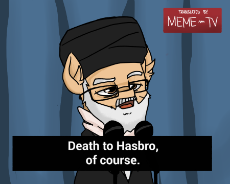
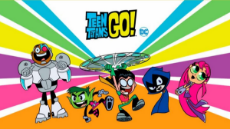

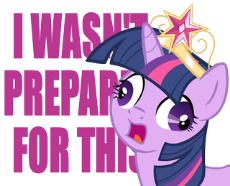
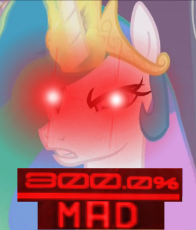
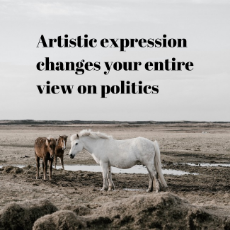




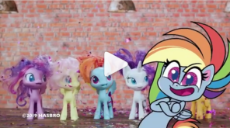

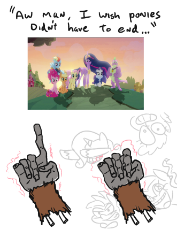
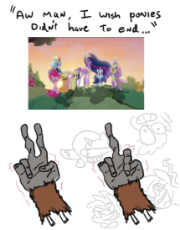
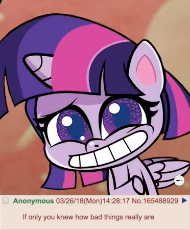


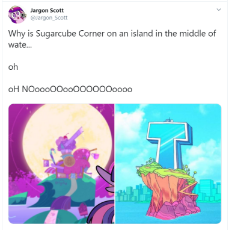


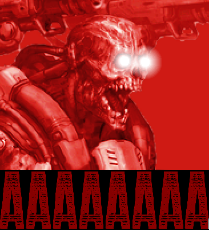



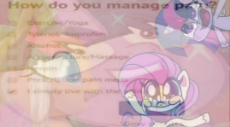
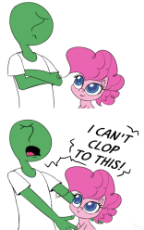
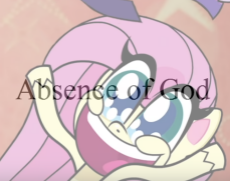




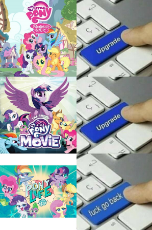
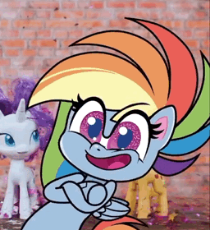







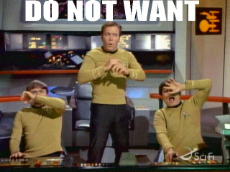


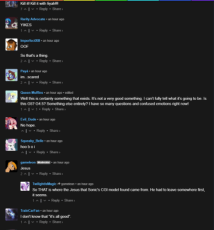
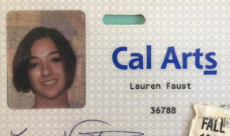


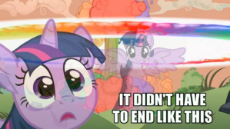


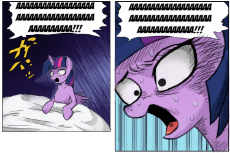

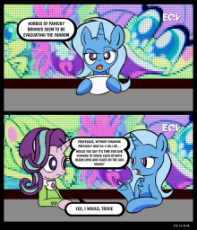


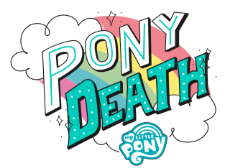


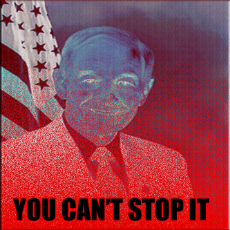
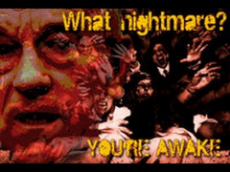

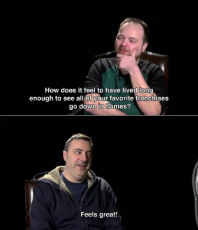
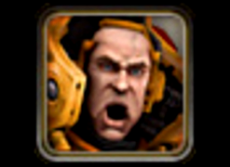


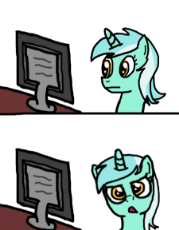


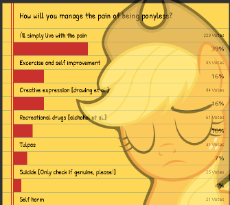
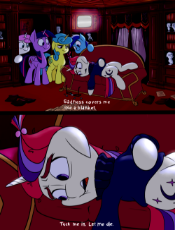


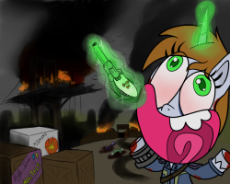

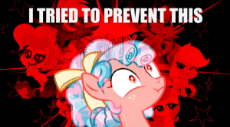
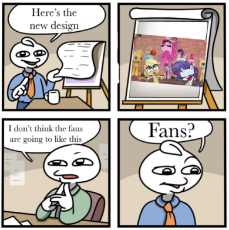
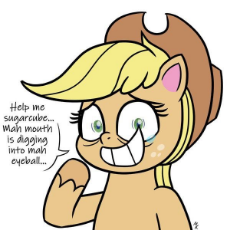

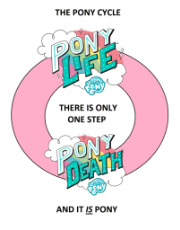
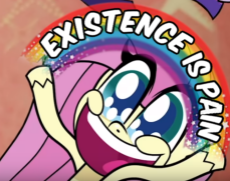
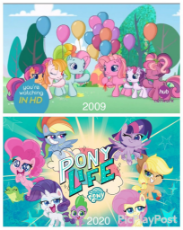

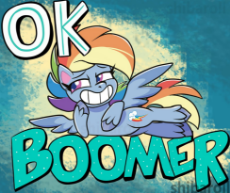


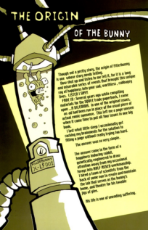
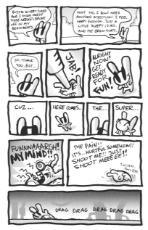
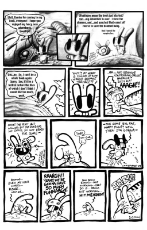
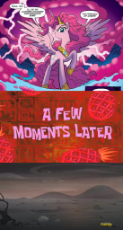

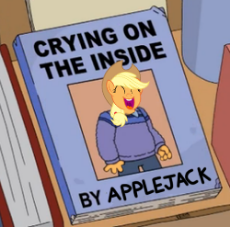



![Genesis_of_Aquarion_-_16_[3xR][Blu-ray.720p.H264.FLAC.AC3]_[5F487826].mkv_snapshot_18.41.692.png](/images/thumb/24EA80B64A8DC9B62F74339737FA069D-1585209.png)